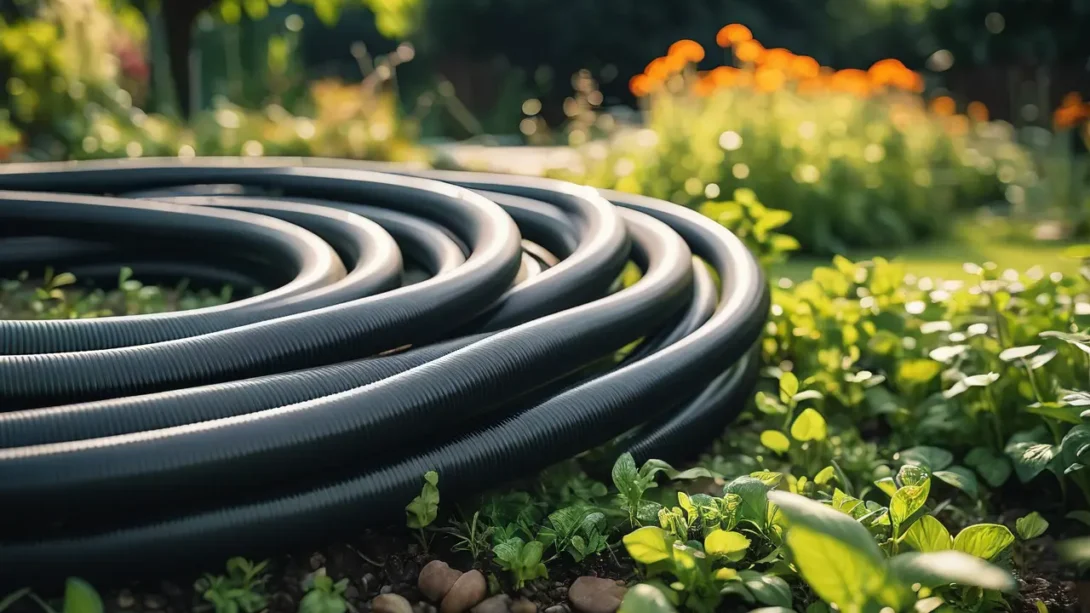In the realm of gardening and outdoor maintenance, few tools are as essential as a reliable hose. Whether watering plants, washing vehicles, or cleaning outdoor surfaces, a hose serves as a versatile and indispensable tool. However, the effectiveness and longevity of a hose greatly depend on how it is handled and maintained, particularly when it comes to rolling it up after use.
Your Hose
Before delving into the specifics of rolling up a hose, it’s essential to understand the hose itself. Hoses come in various types, including vinyl, rubber, and reinforced hoses, each with its own set of properties and ideal uses. Additionally, hoses are equipped with components such as nozzles, couplings, and fittings, which facilitate connection to water sources and accessories.
One of the most common problems associated with hoses is damage caused by improper handling, particularly when rolling or storing them. Kinks, twists, and punctures can significantly reduce a hose’s effectiveness and lifespan. Therefore, mastering the art of rolling up a hose is not only about tidiness but also about protecting your investment and ensuring optimal performance.
Preparing to Roll Up the Hose
Before embarking on the task of rolling up your hose, it’s essential to prepare adequately. Start by clearing the area around the hose to minimize obstacles and tripping hazards. Additionally, ensure that the hose is completely empty of water and debris to prevent mold growth and damage. Finally, take a moment to inspect the hose for any signs of damage, such as leaks or cracks, which may require repair before storage. Taking these preparatory steps sets the stage for a smooth and efficient rolling process, ensuring that your hose remains in top condition for years to come.
Step-by-Step Guide to Rolling Up a Hose
Now that we’ve laid the groundwork, let’s dive into the practical aspects of rolling up a hose. There are several methods you can use, each with its own advantages and considerations. Below, we’ll outline three commonly used techniques:
1. Coil Method
- Start by gripping the nozzle end of the hose firmly in one hand, ensuring that the hose is straight and free of twists.
- With your free hand, begin coiling the hose in a circular motion, moving in the direction away from your body.
- Aim for tight, uniform loops, overlapping each loop slightly to prevent the hose from unraveling.
- As you reach the end of the hose, use your hand to secure the coil by tucking it under the loops or by using a hose holder.
2. Figure Eight Method
- Begin by creating an initial loop near the nozzle end of the hose, bringing the hose back towards itself to form a figure-eight shape.
- Continue alternating the direction of the loops, moving away from the initial loop and then towards it.
- Aim to maintain consistent loop sizes and spacing to ensure a neat and compact roll.
- Once you reach the end of the hose, secure it by tucking the nozzle end under one of the loops or using a hose holder.
3. Over-Under Method
- Hold the nozzle end of the hose in one hand and drape the rest of the hose over your forearm, forming a loop.
- With your free hand, roll the hose overhand, alternating the direction with each loop to create an “over-under” pattern.
- Ensure that each loop is laid evenly and that there is consistent tension throughout the roll.
- Secure the end of the hose by tucking it under one of the loops or using a hose holder.
Regardless of the method you choose, the key is to maintain even tension and avoid twisting or kinking the hose. Taking the time to roll up your hose properly not only ensures easy storage and retrieval but also prolongs its lifespan and prevents unnecessary wear and tear. Practice makes perfect, so don’t be discouraged if it takes a few tries to master the technique that works best for you.
Tips and Techniques for Efficient Rolling
While the step-by-step guide provides a solid framework for rolling up your hose, there are additional tips and techniques that can further enhance your efficiency and effectiveness:
Proper Body Mechanics
When rolling up a hose, use proper body mechanics to reduce strain and prevent injury. Bend your knees and keep your back straight to avoid unnecessary stress on your spine. Additionally, switch hands periodically to distribute the workload evenly and prevent fatigue.
Consistent Loop Sizes
Aim to maintain consistent loop sizes throughout the rolling process. This not only results in a neater appearance but also ensures that the hose coils evenly without bulges or gaps. Practice creating loops of the same size until it becomes second nature.
Utilize Hose Reels or Hangers
Consider investing in a hose reel or wall-mounted hose hanger to facilitate storage and retrieval. These devices help keep your hose neatly coiled and off the ground, reducing the risk of damage from tripping hazards and environmental elements. Choose a hose reel or hanger that matches the length and weight of your hose for optimal functionality.
Common Mistakes to Avoid
In addition to implementing best practices, it’s essential to be mindful of common mistakes that can compromise the integrity of your hose:
Overstuffing Loops or Coils
Avoid overstuffing loops or coils when rolling up your hose, as this can lead to kinks and tangles. Maintain a consistent tension and allow the hose to coil naturally without forcing it into tight spaces.
Allowing Twists and Kinks to Form
Be vigilant about preventing twists and kinks from forming as you roll up your hose. These can weaken the hose and restrict water flow, leading to inefficiency and potential damage. If you notice any twists or kinks, stop rolling and untangle them before proceeding.
Neglecting to Secure the Hose Properly
Once you’ve finished rolling up your hose, take the time to secure it properly to prevent unravelling. Tuck the nozzle end under a loop or use a hose holder to keep the coil in place. This ensures that your hose remains tidy and ready for use when needed.
Maintaining Your Hose
Lastly, don’t forget to regularly inspect and maintain your hose to prolong its lifespan and ensure optimal performance. Check for signs of wear and tear, such as cracks, leaks, or degraded fittings, and address any issues promptly. Clean your hose regularly to remove dirt, debris, and algae buildup, and store it in a dry, sheltered location when not in use.
In conclusion, mastering the art of rolling up a hose is a fundamental skill for any gardener or outdoor enthusiast. By following proper techniques, avoiding common mistakes, and practicing regular maintenance, you can keep your hose in top condition and enjoy years of reliable service. So the next time you finish watering your garden or washing your car, take a moment to roll up your hose with care—it’s a small investment that pays off in the long run.




